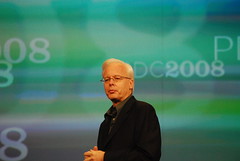Two weeks ago the Australasian CloudCamp tour hit Sydney for an event at the National Innovation Centre of the Australian Technology Park. A crowd of around 90 people turned up for some lively discussions ŌĆō as always there were some common themes – the legal and jurisdictional aspects of Cloud Computing and the public/private cloud debate. For the former we were lucky to have Alec Christie from law firm DLA Phillips Fox in attendance ŌĆō somewhat surprisingly for a lawyer who makes money out of complexity, Alec was reasonably relaxed about the legal implications of the cloud. His firm actually produced this guide to cloud computing and the law ŌĆō some of it is country specific but itŌĆÖs still a worthwhile read. ItŌĆÖs a meme IŌĆÖve returned to since with some discussions at Cloud Connect in San Jose, and will do so in May at Glue conference ŌĆō more on that another time.
Anyway ŌĆō as with previous CloudCamps, the private cloud debate reared itŌĆÖs head. I even scheduled that particular session out in the foyer so that if people came to blows (this debate really inflames some passions), we could simply hose the blood off the tiles. There is a real continuum of thought around this topic, fellow commentator Phil Wainewright, an analyst I greatly respect, comes firmly from the school of thought that says private cloud is bunkum. He certainly doesnŌĆÖt mince words, however he is moderate enough to accept a private segmentation of some public cloud resource as a valid approach (roughly what Amazon is doing with its Virtual private Cloud) but is adamant that ŌĆ£itŌĆÖs not cloud if itŌĆÖs confined within a closed, single-enterprise environment.ŌĆØ In fact Wainewright goes so far as to contend that many so-called ŌĆ£cloudŌĆØ offerings are :
as alluring as lipstick daubed on a pig, because behind the scenes the hosting providers will be doing a lot of covert physical partitioning to cut corners
OuchŌĆ”
At the other end of the spectrum, at Cloud Connect we had a lot of what Krish calls ŌĆ£cloudwashŌĆØ ŌĆō traditional vendors dressing their legacy offerings up and calling them ŌĆ£cloud enabledŌĆØ, ŌĆ£cloud middlewareŌĆØ or some other cloudy descriptor ŌĆō little more than marketing but it seems to work for them, despite the howls of derision from attendees:
Anyway ŌĆō at the Sydney event Samuel from UltraServe organized a camera to capture some thoughts from attendees ŌĆō thanks to Geoff for spending time to record (and edit) the video.















